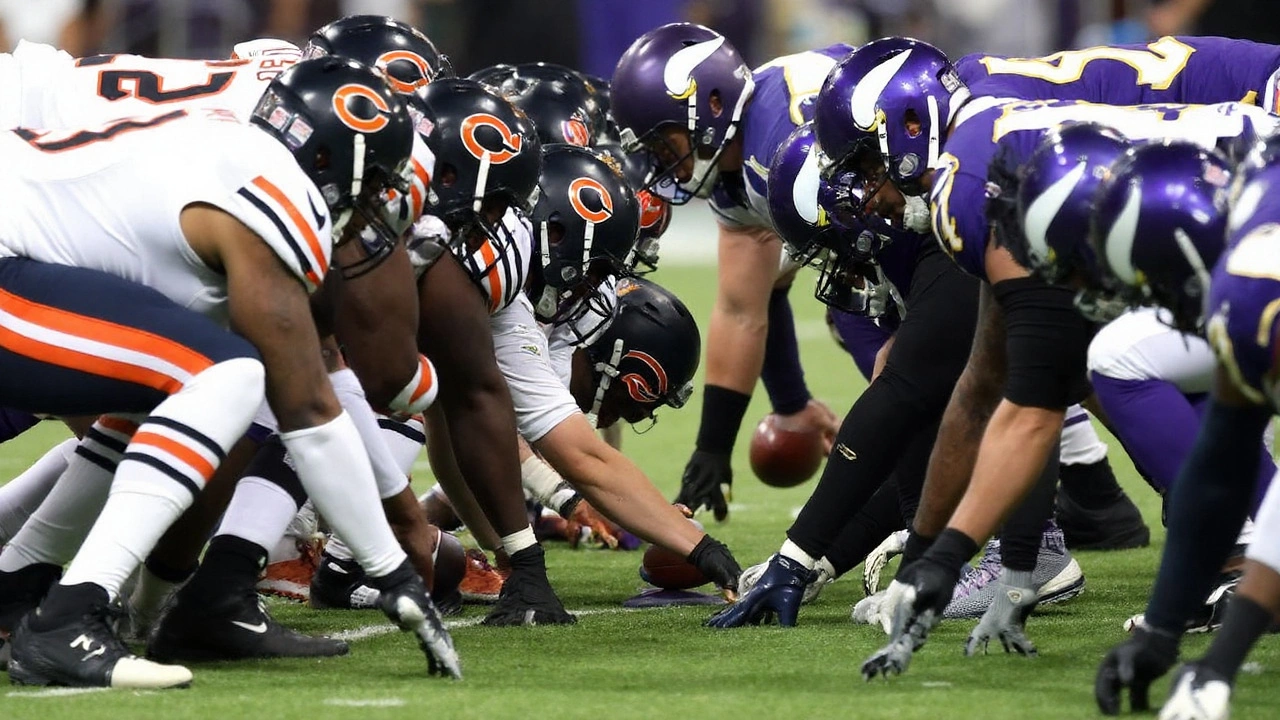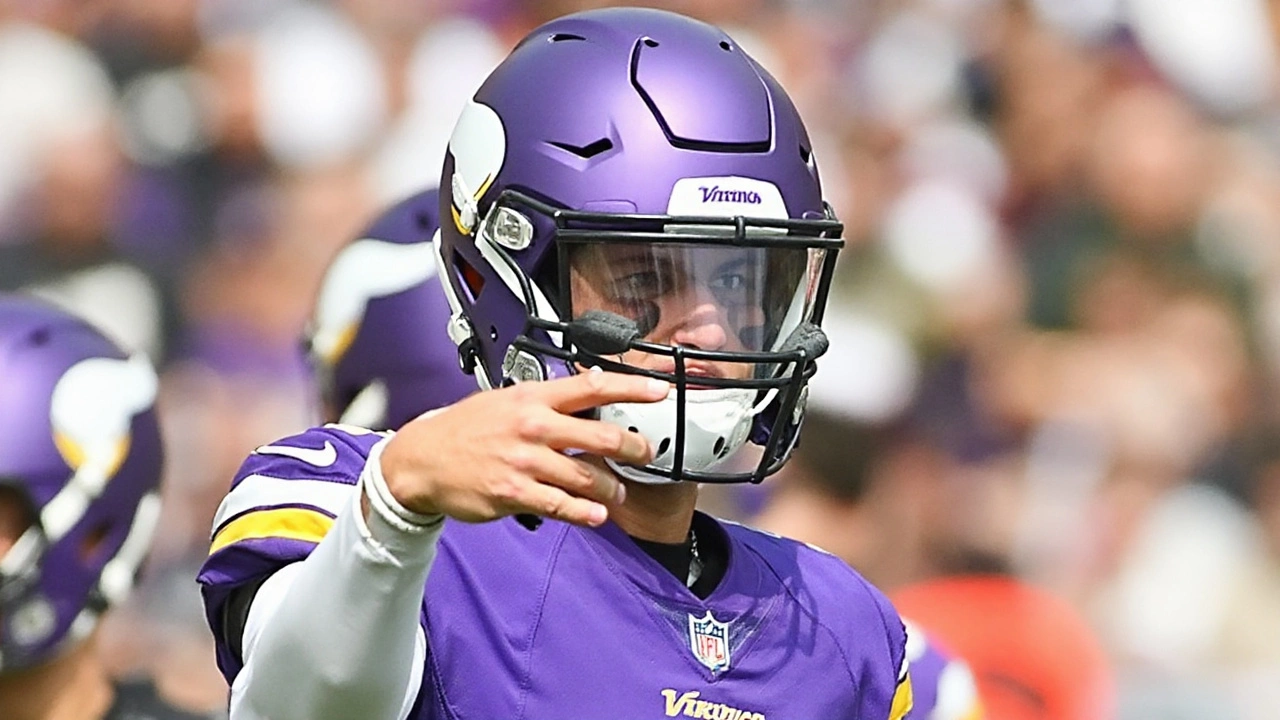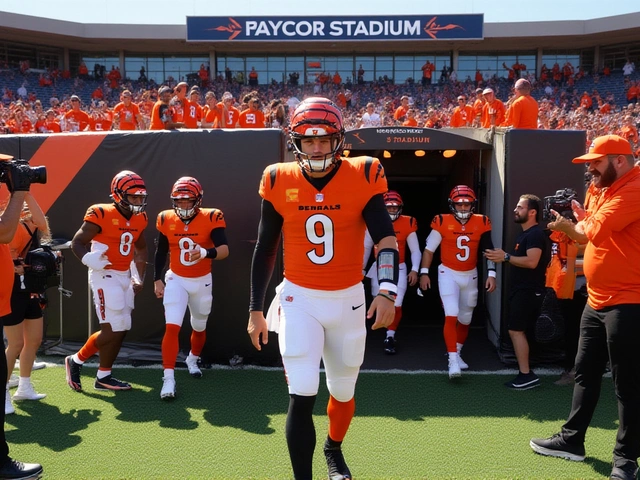For a half, Chicago looked brand-new. Then the fourth quarter felt painfully familiar. In front of a loud Soldier Field crowd on Monday Night Football, the Bears built a two-score cushion and still watched the Bears vs Vikings opener slip away, 27–24. A promising start under new head coach Ben Johnson turned into a season-opening gut punch that sounded like a rerun.
A blistering start under Ben Johnson
Johnson’s script was crisp, fast, and quarterback-friendly. Caleb Williams, now in Year 2 and carrying real expectations, opened by completing his first 10 passes—his longest such streak to begin a season opener and the best by a Bears quarterback in that spot since 1978. The tone-setter came on the opening drive: Williams lowered his shoulder on a 9-yard keeper, trucking Vikings corner Jeff Okudah across the goal line for his first career rushing touchdown. It was also Chicago’s first opening-drive touchdown since 2023, a simple marker that this offense might finally be different.
The passing game looked intentional, not improvised. Williams worked rhythm throws early, then took the lid off with a 30-yard strike to DJ Moore that signaled confidence and command. Chicago carried that assertiveness into the second quarter, spreading the ball, leaning into motion, and varying tempos to stay ahead of the chains. It wasn’t just clean—it was composed.
The defense matched that pace with timely aggression. When cornerback Nahshon Wright jumped a route and housed it for a pick-six in the third quarter, the Bears were up 17–6 and Soldier Field shook like it used to. In that moment, the NFC North felt wide open and Chicago looked ready to run through it.
That’s the picture Johnson was hired to paint. In Detroit, he built a reputation for tailoring plans to his quarterback’s strengths. With Williams, that means mobility, off-platform throws, and a feel for making chaos look controlled. Through the first 30 minutes, the fit looked real. Williams didn’t force it. The pocket management was steadier. The reads were cleaner. The offense felt less improvised and more intentional.

Old habits resurface after halftime
Then came the leaks—small, frustrating, and piling up. Penalties at the wrong time. Assignments missed by inches. A third-and-manageable becoming third-and-long. Minnesota didn’t need to be spectacular; the Vikings just needed Chicago to blink, and Chicago obliged. The Bears’ 17–6 edge evaporated as Minnesota stacked drives, flipped field position, and forced the home team to chase momentum instead of keeping it.
Williams owned it afterward. “We felt like we were dominating the game,” he said. “We were in control up to two scores coming out of half… It’s just being able to go out there and execute the plays that are called, be able to execute them at a high level. That’s something we take pride in.” The message wasn’t about play-calling; it was about precision. When the game tightened, Chicago didn’t finish plays at a playoff standard.
This is where the loss stings more than usual. Johnson was brought in to change both the strategy and the psychology—especially late, especially against division rivals. Instead, the second half looked like so many of the tight losses that haunted this group last season. The offense got choppy. Drives stalled. The defense had chances to get off the field and couldn’t string enough stops together. By the time the clock turned cruel, the Vikings were the steadier team.
What happened tactically? Nothing exotic, just the kind of mid-game chess that decides openers. Minnesota tightened coverage and forced Chicago into tougher down-and-distance. The Bears’ penalties and execution dips magnified that. A couple of missed details became stalled drives, and stalled drives became a long fourth quarter.
The context matters here. Williams entered 2025 off a solid rookie year (93.8 passer rating) and with a coaching staff designed to accelerate his growth. Early on, you saw it: quicker decisions, better rhythm, and a plan that put him on schedule. But NFL games are decided in the margins, and Chicago lost the margins after halftime. The Bears will like a lot of what they see on the first-half tape; they won’t like how the fourth quarter turned into a familiar story.
There’s also the divisional tax. Openers against NFC North opponents carry extra weight—tiebreakers, momentum, tone-setting. For a team selling progress and a reset under Johnson, blowing a two-score lead at home to a rival lands differently. Fans wanted proof the spiral was over. They got a reminder it takes more than a hot start and a clever script.
Still, there are real building blocks. Williams looked comfortable running the operation. The designed quarterback run in the red zone made sense. The shot to Moore was decisive. The defensive score from Wright showed opportunism. You can build on those pieces, and Chicago should.
Where does the fix start? With the boring stuff: discipline and detail. Clean up the pre-snap issues. Keep the tempo without hurrying the mechanics. Trust the quick game, then take your shots when the look is right. Defensively, turn pressures into drive-killers and win the money downs. These aren’t sweeping changes; they’re habits that move close losses into the other column.
Key numbers that framed the night:
- 10 straight completions to start for Williams—the longest by a Bears QB in a season opener since 1978.
- 9-yard rushing touchdown on the opening drive, trucking Jeff Okudah at the goal line.
- Pick-six by Nahshon Wright to make it 17–6 in the third.
- Final: Vikings 27, Bears 24—a two-score lead turned into a three-point defeat.
Johnson’s challenge now is equal parts tactical and cultural. He has to keep the early-down rhythm while tightening situational football. He has to preserve Williams’ improvisational spark without letting the offense drift into sandlot mode when the game gets tight. And he has to convince a locker room that this collapse doesn’t define them when so many recent losses have looked just like it.
One game doesn’t make a season, but openers do reveal tendencies. The Bears showed they can scheme a defense early, punch first, and build a lead. They also showed that finishing—drives, quarters, games—remains the hurdle between promise and the standings. The tape this week won’t be about installing a new identity. It’ll be about protecting the one they flashed for 30 minutes, and carrying it through the moments that decide who you are.



